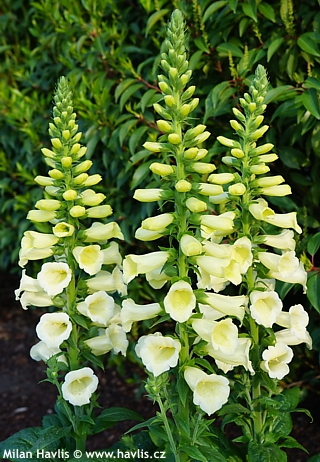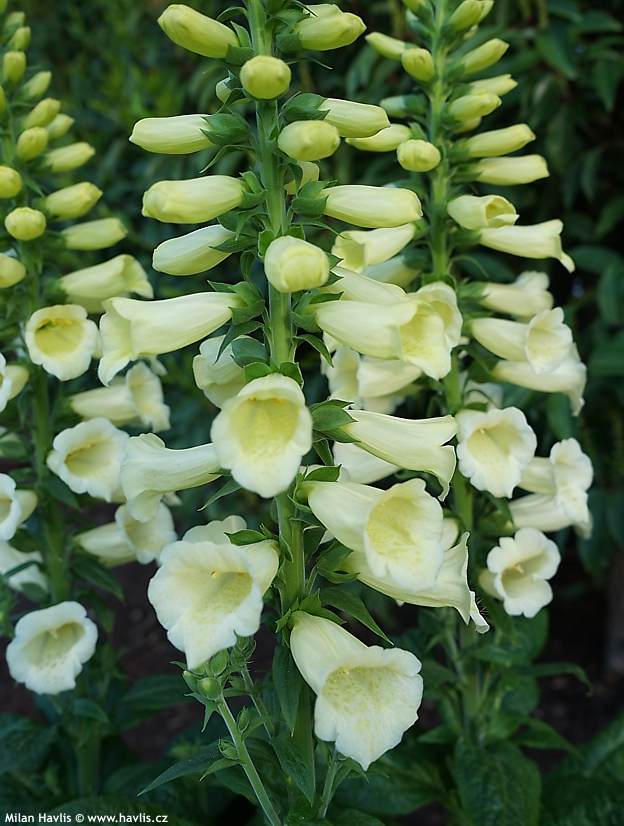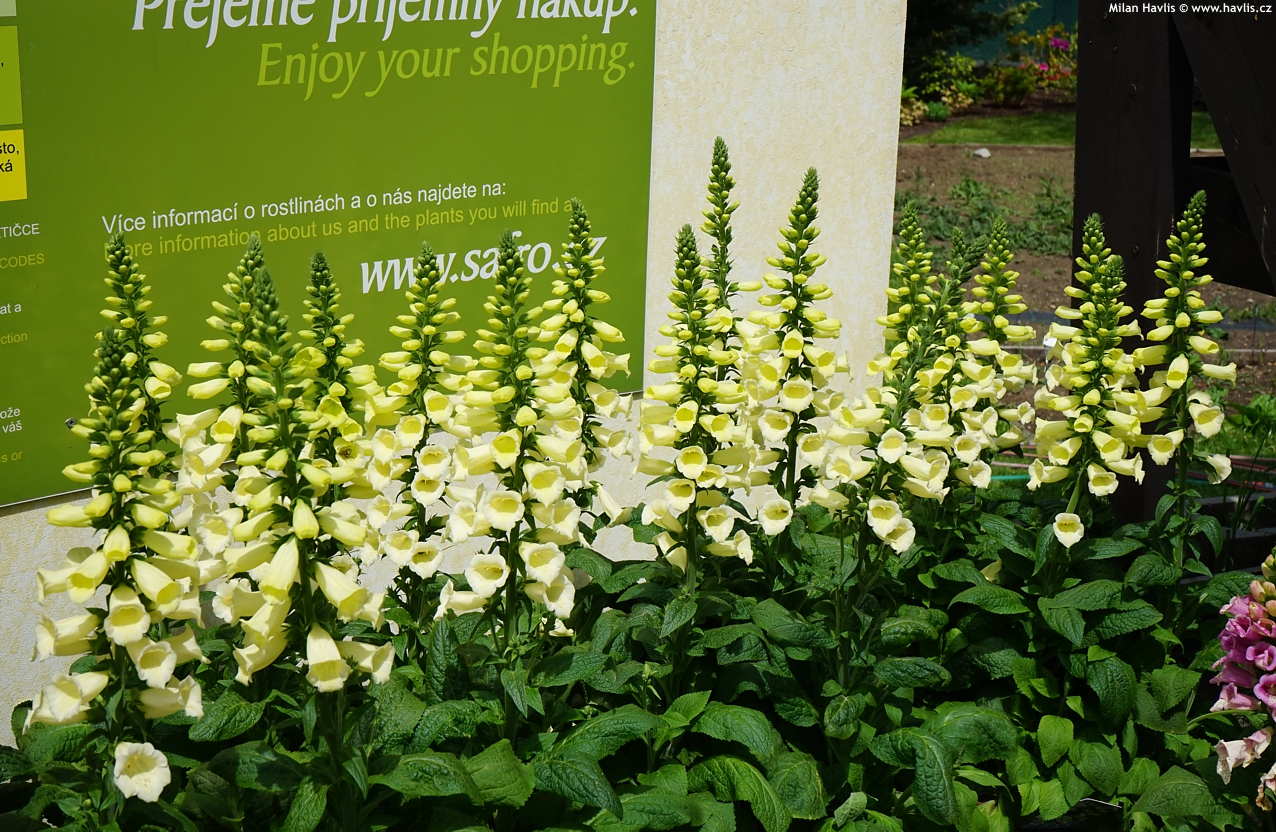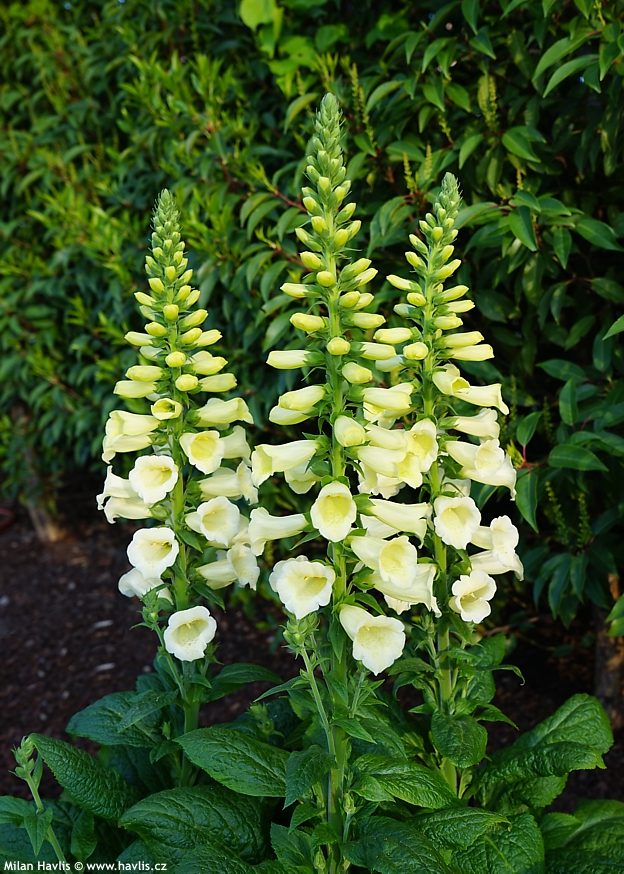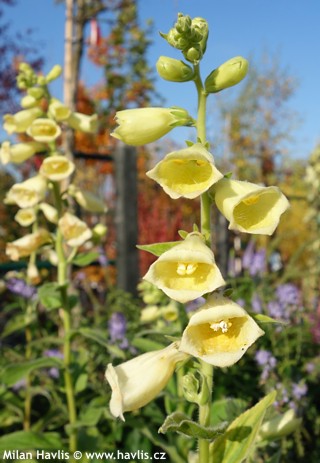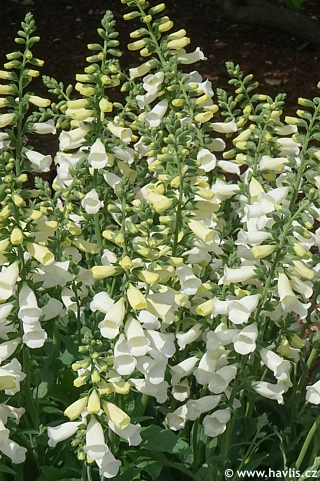Digitalis 'LEMONCELLO' common foxglove
Digitalis
Common foxglove is a European native and is found marginally in our country, too. Its flowers are so attractive that breeders keep hybridizing them and every now and then they introduce a new, improved variety. These improvements usually involve not just pretty flowers but mainly their life span – in the wild common foxglove is a biennial which needs one whole year for plant maturation to produce flower stems the year after. No one is so patient today. So new varieties are hybrids eliminating waiting so they either flower in their first year or they behave like clumping perennials without a need for self-seeding.
There are not many yellow flowering foxglove species or varieties, and as they are so rare each novelty is joyfully celebrated. Peet Burg from the Botanic Nursery in Wiltshire, UK, truly has a reason to pop champagne. From a chance seedling he found in 2011 he developed a unique variety over a few years of improving which is now considered the best yellow available and was among the finalists of the Chelsea Flower Show in 2017.
Lemoncello foxglove bears large, pale lemon yellow, funnel-shaped flowers with light chartreuse spots inside. The flowers are loosely clustered along about 50-60 cm tall stems. Blooming begins in mid June and continues until late August if you remove the first stem which will enhance production of shorter, secondary stems. It is a biennial which needs to set seeds for another generation and bloom in its second year. It was named after a famous liquor from south Italy of the same colour.
Leaves are large, coarse, broadly lance-shaped, mid green, toothed at margins, and hairy. Foxglove is a medical plant but also quite toxic. Even though it does not make any fruit-like looking berries that would attract children it is not recommended for mass plantings near playgrounds, school yards, or kindergartens.
Foxglove will grow in almost any soil apart from too wet or too dry. In the wild it is found in humus-rich soils in light woods and its margins, which means that it will love partial shade in your garden, or full sun if kept moist. Excess fertilizing may result in production of enormous leaves but no flowers. Hardy to about -34°C (USDA zone 4).
Last update 04-12-2020.

































